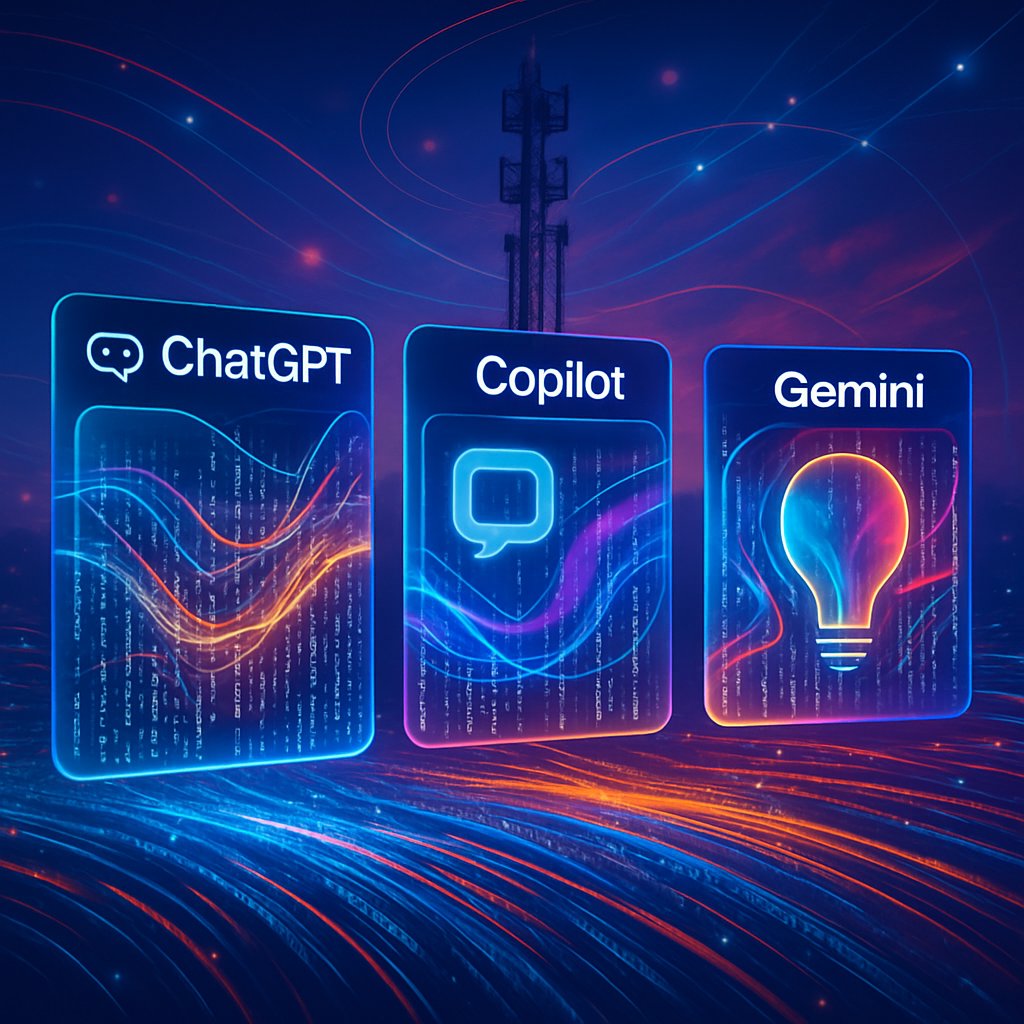ChatGPT vs Copilot vs Gemini: What Their Network Traffic Reveals About the Future of AI
In the dynamic digital landscape of today, Generative AI (GenAI) chatbots are making waves, changing how we interact online and pushing the boundaries of what's possible with artificial intelligence. While most of us are familiar with the charming banter or impressive outputs of popular bots like ChatGPT, Copilot, and Gemini, there's a hidden aspect we often overlook—how these bots communicate with the networks they operate on. A fascinating new study dives deep into the network traffic generated by these chatbots, shedding light on their behaviors, differences, and implications for mobile networks. Let's break it down into bite-sized pieces!
Racing into the Digital Future with GenAI
As more folks hop on the GenAI bandwagon, it’s essential to understand how these tools are reshaping everything from education to healthcare. The rise of these chatbots, particularly accessed via mobile apps, has led to increased engagement. According to the latest Ericsson Mobility Report, user interest in GenAI apps is skyrocketing, signaling an impending rush in network demands.
Imagine this: The chatbot you casually tap away at for homework help or creative writing is actually a powerhouse of data transfer constantly buzzing behind the scenes. This study tracks the network traffic generated by the three most popular chatbots—ChatGPT, Copilot, and Gemini—to identify how they differ and how they'll impact mobile networks.
Why Should We Care About Their Traffic?
At first glance, studying network traffic might seem like a techy detail worth skipping. But think of it this way: just as a crowded highway can affect the flow of traffic, these chatbots' data use can stress mobile networks—especially if not managed properly. Understanding their traffic helps network engineers prepare for this future and enables an efficient experience for users.
The Study Breakdown: What Was Analyzed?
To uncover insights, the researchers gathered and labeled two extensive datasets:
1. Generic Dataset: Comprised 6060 hours of unconstrained interactions using various prompts.
2. Controlled Dataset: Included identical prompts sent through each chatbot and conventional messaging apps like WhatsApp and Telegram for comparative analysis.
This in-depth approach enabled the researchers to uncover unique traits and challenges posed by GenAI traffic compared to traditional mobile app traffic.
The Traffic Talk: What Did They Find?
Distinctive Patterns:
The study showed that each chatbot generates unique traffic patterns based on the type of content—text or images. For example, while Gemini relied heavily on faster communication protocols like QUIC, ChatGPT only used TLS 1.3.Busy Biflows:
Biflows— streams of packets sent in both directions (upload/download)—varied significantly across the chatbots. The packets and traffic volume data indicated Copilot increased the load during multimodal content generation, while ChatGPT generated more packets due to its unique method of sending data in tiny segments.Uplink and Downlink Activity:
It noted that while conventional messaging apps generally have a balanced exchange between user inputs and responses, GenAI apps like ChatGPT showed sustained upstream activity, which dramatically highlights their unique network usage demands.
Traffic Comparison: GenAI vs. Messaging Apps
When comparing traffic between GenAI chatbots and messaging apps:
- GenAI chatbots generated significantly more traffic. For instance, during text generation, downstream rates for ChatGPT and Copilot were below 88 KB/s, while Gemini exhibited an intriguing burst of traffic that often peaked at greater rates.
- In comparison, traditional messaging apps, like WhatsApp and Telegram, barely made a blip on the traffic radar, emphasizing how GenAI is changing the game in mobile network dynamics.
What It Means for the Future
Understanding these traffic patterns isn't just about coaxing insights for curious techies; it's a serious call to action for network engineers and service providers. As GenAI chatbots become even more standard fixtures in our digital interactions, networks must prepare for increased bandwidth demands, particularly in uplink capacity.
Real-World Implications
- Network Management: As the study highlights, if no proactive measures are taken to accommodate GenAI's high upstream requirements, users may experience laggy or disrupted services.
- App Development: Developers must consider optimized traffic handling to improve app performance in real-time scenarios.
Improving Your GenAI Interactions with Smarter Prompts
While the researchers delved into traffic analytics, they discovered an exciting correlation between the types of prompts used and the responses generated. Want to optimize your own interactions with GenAI tools? Here are some tips:
- Be Specific: Tailor your prompts to include specific requests (like asking for both text and image responses).
- Short and Sweet: For quicker responses, aim for concise prompts that don’t require extensive processing.
Key Takeaways
- Generative AI is a Game Changer: As tools like ChatGPT, Copilot, and Gemini become integral to online interactions, understanding their network demands is critical.
- Unique Traffic Patterns: Each chatbot exhibits distinct network traffic characteristics, requiring tailored solutions from service providers.
- Impact on Uplinks: GenAI chatbots often require significant upstream capabilities, presenting new challenges for mobile networks.
- Preparation is Key: Anticipating traffic load from these chatbots can help avoid operational stress on mobile networks.
- Smarter Interactions: Users can enhance their AI experience by utilizing specific and direct prompts.
In conclusion, with the rapid evolution of AI-assisted chatbots, it's crucial for both users and service providers to understand their implications on network traffic to ensure smooth digital experiences. Imagine a world where your AI buddy is not just a genial conversation partner, but also a sign of efficient network management; that's the future we can look forward to!

